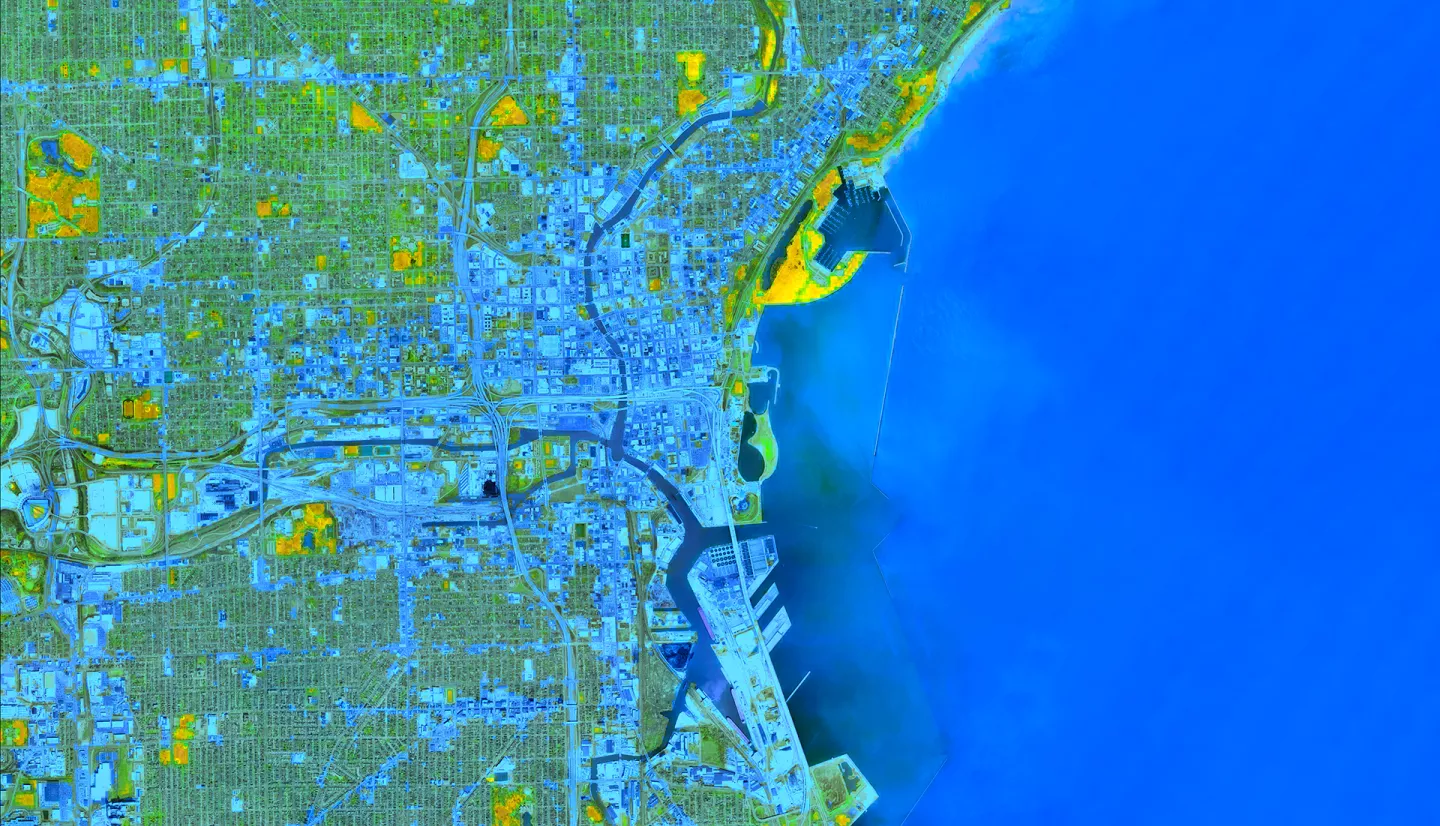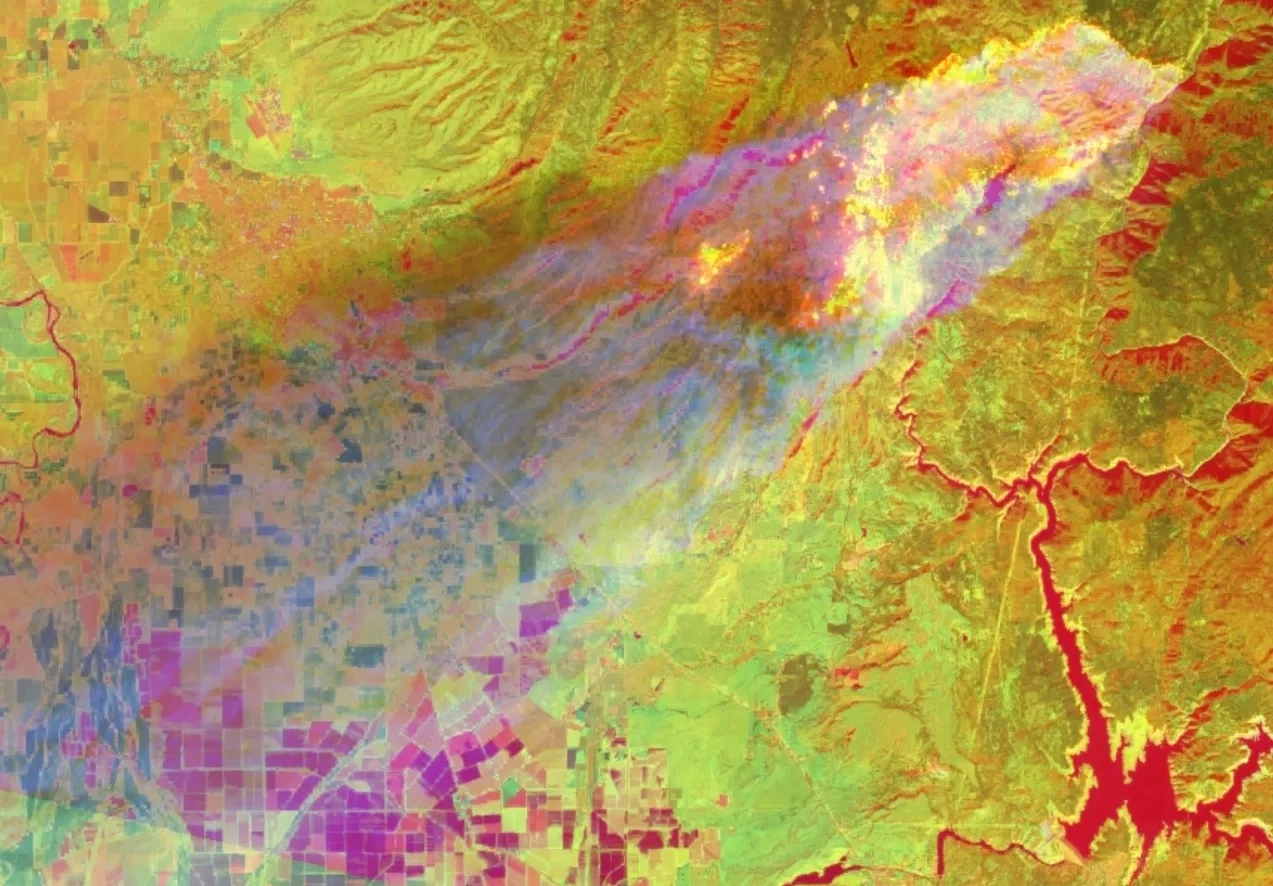The environmental justice movement focuses on ensuring communities receive equitable protection from natural and human-induced environmental hazards. It embodies the principle that all communities should be heard and represented in decision making.
NASA’s EEJ program helps ensure Earth data can benefit everyone, regardless of race, color, national origin or income. We help communities across the U.S. make informed decisions about issues affecting them. The program also builds new partnerships to support community outreach, training, and information and tools that use Earth observations. We aim to create opportunities for people to support community empowerment with Earth observation information.
Our Focus
amplifying power within Communities
NASA has many tools, data sets, and other capacity building resources that can help protect the well-being of vulnerable communities. Through our partnerships, we can help provide decision-makers the information they need to advocate for policy change. Download the NASA EEJ Flyer (2023) to read more.
To learn more about the latest program news, check out the EEJ newsletter:
- August 2023
- September 2023
- October 2023
- November 2023
- December 2023
- January 2024
- February 2024
- March 2024
- April 2024
- May 2024
- June 2024
- July 2024
- August 2024
- September 2024
- October 2024
- November 2024
- December 2024
You can subscribe to receive the newsletter here.
Creating Equitable Opportunities
Building a more equitable future in the face of climate change is no small feat. It will take a diverse group of people with the skills and resources necessary to advocate for change. The EEJ program leverages training and opportunities across various NASA programs to advance community understanding and use of Earth Observations. These programs include:
- Research Opportunities in Space and Earth Sciences ( ROSES )
- Future Investigators in NASA Earth and Space Science and Technology ( FINESST )
- Advanced Information Systems Technology ( AIST )
- ARSET trainings
- DEVELOP projects
- Prizes and Challenges
Our Projects
The Equity & Environmental Justice element supports a variety of projects that utilize Earth observations to help address challenges facing communities in the United States. Our portfolio demonstrates the benefits of using NASA Earth observations to inform decision and policy-making through multiple types of projects.
- Landscape Analyses: Studies that use participatory data collection and assessment processes to increase NASA's understanding of the EEJ "landscape" and help characterize EJ communities priorities, environmental issues being faced, familiarity of communities with Earth observations, and opportunities to engage. (6-12 months long)
- Community-based Feasibility Studies: Short-term projects that explore and test ways to address environmental issues facing EJ and underserved communities with the help of Earth science and geospatial information by working with community organizations to tailor projects to community needs and local decision making. (12-18 months long)
- Data Integration Projects: Projects that develop, test, and demonstrate sustained use of integrated Earth science, geospatial, and socioeconomic data, tools, and/or applications to support EJ communities with novel insights into community level management and culminate in GIS enabled products or tools for public dissemination to support EEJ communities. (12-24 months long)
ROSES-21 A.49 Projects:
Landscape Analyses
- 21-EEJ21-0001: Leveraging Earth science data to heighten awareness of environmental injustices within the U.S. prison system (PI Dr. Caitlin Mothes) - link
- 21-EEJ21-0002: Landscape Analysis of African American farmers in North Carolina and approaches for applying NASA’s data to help prevent their extinction (PI Dr. Kibri Everett) - link
- 21-EEJ21-0007: The Project GrEEEn: Utilizing an environmental justice lens and Earth science data to enhance greenspace Equity, Exposure, and Experience (PI Dr. Mahbubur Meenar) - link
- 21-EEJ-0014: GPM, IMERG precipitation estimate in an arid, environmental justice area of Tucson, Arizona, USA (PI Ann Marie Wolf) - link
- 21-EEJ21-0020: Assessment of the Gulf Coast Environmental Justice Landscape for Equity (AGEJL-4-Equity) (PI Dr. Nathan Morrow) - link
- 21-EEJ21-0025: Spatial and temporal variations in land surface temperature, vegetation and socioeconomic and health characteristics in frontline EEJ neighborhoods in New York City: Integrating Scientific Study with Community Perspectives (PI Dr. Peter Marcotullio) - link
- 21-EEJ21-0043: Leveraging Earth Observation Data to Support Environmental Justice: A Puerto Rico Coastal Community Case Study (PI Dr. Stephen Flynn) - link
- 21-EEJ21-0045: Exploring synergistic opportunities between Charlotte-area environmental justice initiatives and NASA Earth science information (PI Dr. Jacelyn Rice Boayue) - link
- 21-EEJ21-0058: Can remote data connect us to the land? A landscape analysis for braiding satellite-based information and indigenous knowledge in California (PI Laura Forni) - link
- 21-EEJ21-0066: Assessment of Wildland Fire-Related Environmental Exposure Issues Impacting Vulnerable Populations in California (PI Dr. Joseph Wilkins) - link
Community-based Feasibility Studies
- 21-EEJ21-0005: Toward Environmentally and Socially Equitable Stormwater Management Fees: The Case of Corpus Christi in Texas (PI Dr. Hua Zhang) - link
- 21-EEJ21-0010: Identifying temperature disparities, energy insecurity, and social vulnerability for energy justice in New York State (PI Dr. Daniel Carrion) - link
- 21-EEJ21-0011: Improved monitoring and management of urban tree equity: integrating metrics of tree quality with tree cover (PI Dr. Kevin Mueller) - link
- 21-EEJ21-0017: Community Feasibility Study: Urban Flood Modeling using a Data-Driven, Community-Centered Approach in Centreville, IL (PI Dr. Claire Masteller) - link
- 21-EEJ21-0024: Addressing Inequitable Flood Risks in Southeast Michigan through Green Infrastructure (PI Dr. Mary Ellen Miller) - link
- 21-EEJ21-0041: Green infrastructure solutions to support flood mitigation and adaptation in coastal low-lying disadvantaged communities (PI Leah Mayo) - link
- 21-EEJ21-0044: A spatial decision support system for identifying heat vulnerability based on a comprehensive energy budget model and multi-criteria decision analysis in Oklahoma City, OK (PI Dr. Wenwen Cheng) - link
- 21-EEJ21-0048: Equity, Environmental Justice, and Extreme Heat: Leveraging Earth Observations to Strengthen Community Driven Climate Mitigation Strategies (PI Dr. Genee Smith) - link
- 21-EEJ21-0049: Using NASA Earth Observations to Support Environmental Justice Communities in Atlanta, Georgia (Dr. Yun Hang) - link
- 21-EEJ21-0050: Environmental Injustice and Deaths of Despair: Lessons from Montana's Tribal Lands (PI Dr. Sergii Skakun) - link
- 21-EEJ21-0053: Pairing earth observations and socioeconomic data to enable student-led hazard monitoring for environmental justice in New York (PI Dr. Susana Adamo) - link
- 21-EEJ21-0054: Communities for a Better Environment: Triangulating NASA Data and Participatory GIS with Local Organizing to Advance Environmental Justice in Los Angeles (PI Dr. Jason Douglas) - link
- 21-EEJ21-0060: Assessing accessibility, inequities, and barriers using NASA and other wildfire communication tools in Environmental Justice communities (PI Dr. Kerry Grimm) - link
- 21-EEJ21-0064: Unequal distributions of commuter exposure to extreme heat and air pollution at neighborhood and microscales: A Community-based Feasibility Study designed for NASA's Earth Science Applications focused on Equity and Environmental Justice (PI Dr. Peter Ibsen) - link
Data Integration Projects
- 21-EEJ21-0003: Where the Grass Grows Greener: The Impacts of Urban Greening on Housing Prices and Neighborhood Stability (PI Iryna Dronova) - link
- 21-EEJ21-0006: e-JUST: Environmental Justice using Urban Scalable Toolkit (PI Dr. Ashish Sharma) - link
- 21-EEJ21-0012: Designing for Just Green Enough: A Data Integration Tool for Informing Community Green Space Planning (PI Dr. Michelle Stuhlmacher) - link
- 21-EEJ21-0015: Understanding Contaminant Risk through Stories of 'Āina (Relationships between People and Places) in Ke Awa Lau o Pu'uloa (Pearl Harbor) (PI Dr. Eileen Nalley) - link
- 21-EEJ21-0016: Developing an interactive data portal for connecting vulnerable communities to the science of urban heat mitigation (PI Dr. Mehdi Pourpeikari Heris) - link
- 21-EEJ21-0019: An Observation-Driven Framework for Air Pollution Equity and Justice Intervention Modeling (PI Dr. Christopher Tessum) - link
- 21-EEJ21-0028: EO-Enabled Food Security Dashboard to Close Critical Data Gaps in Highly Food Insecure Maui County (PI Dr. Hannah Kerner) - link
- 21-EEJ21-0029: Applying the EVDT Integrated Modeling Framework for Environmental Justice Applications (PI Dr. Danielle Wood) - link
- 21-EEJ21-0037: Spatial decision support for fire management in Indigenous cultural and stewardship practices (PI Dr. Megan Jennings) - link
- 21-EEJ21-0038: Earth observations to reduce greenspace and health inequities: Applying multi-decadal and multi-scale satellite imagery to characterize tree canopy and heat exposure to improve policymaking and community well-being (PI Dr. Karen Seto) - link
- 21-EEJ21-0054: Communities for a Better Environment: Triangulating NASA Data and Participatory GIS with Local Organizing to Advance Environmental Justice in Los Angeles (PI Dr. Jason Douglas) - link
- 21-EEJ21-0055: Mapping Vulnerable Populations in California to Climate-Related Hazards (PI Dr. Miriam Marlier) - link
- 21-EEJ21-0057: ATX CA3TCH UP: Climate Atlas for Accountability and Advocacy Strategies through Co-production with Historically Underserved Community Partners in Austin, TX (PI Dr. Patrick Bixler) - link
- 21-EEJ21-0061: Integration of Satellite data on Air Pollution with Socioeconomic Indicators to assess the impacts of agricultural burning on local communities in the Lower Rio Grande Valley of South Texas (PI Dr. Amit Raysoni) - link
- 21-EEJ21-0067: Predictive Environmental Analytics and Community Engagement for Equity and Environmental Justice (PEACE for EEJ) (PI Dawn Comer) - link
- 21-EEJ21-0070: Investing In Equity and Environmental Justice: An Urban Decision-Support Tool Integrating Earth Observations, Socioeconomic Data, And Ecosystem Service Models (PI Dr. Lingling Liu) - link
ROSES-22 A.28 Projects:
- 22-IDS21-0024: Democratizing data to support adaptation decision making in the North-Atlantic Coastal Plain: land subsidence, compound flooding hazard and water quality (PI Dr. Susanna Werth)
- 22-IDS21-0055: Resolving intra-urban variability in heat and air quality from space and the ground: leveraging diverse observations to support environmental justice (PI Dr. Darryn Waugh)
- 22-IDS21-0070: NASA Earth Observations for Resilient Salton Sea Communities (PI Dr. Mara Freilich)

